Related Research Articles

The history of Christianity concerns the Christian religion, Christian countries, and the Christians with their various denominations, from the 1st century to the present.

The Reformation was a major movement within Western Christianity in 16th-century Europe that posed a religious and political challenge to the Catholic Church and in particular to papal authority, arising from what were perceived to be errors, abuses, and discrepancies by the Catholic Church. The Reformation was the start of Protestantism and the split of the Western Church into Protestantism and what is now the Roman Catholic Church. It is also considered one of the events that signify the end of the Middle Ages and beginning of the early modern period in Europe.
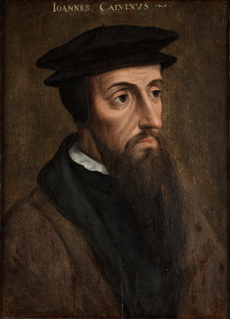
The Huguenots were a religious group of French Protestants who held to the Reformed, or Calvinist, tradition of Protestantism. The term, which may be derived from the name of a Swiss political leader, the Genevan burgomaster Bezanson Hugues, was in common use by the mid-16th century. Huguenot was frequently used in reference to those of the Reformed Church of France from the time of the Protestant Reformation. By contrast, the Protestant populations of eastern France, in Alsace, Moselle, and Montbéliard, were mainly Lutherans.

The French Wars of Religion were a prolonged period of war and popular unrest between Catholics and Huguenots in the Kingdom of France between 1562 and 1598. It is estimated that three million people perished in this period from violence, famine, or disease in what is considered the second deadliest religious war in European history.

The Edict of Fontainebleau was an edict issued by French King Louis XIV and is also known as the Revocation of the Edict of Nantes. The Edict of Nantes (1598) had granted Huguenots the right to practice their religion without state persecution. Protestants had lost their independence in places of refuge under Cardinal Richelieu on account of their supposed insubordination, but they continued to live in comparative security and political contentment. From the outset, religious toleration in France had been a royal, rather than popular, policy.
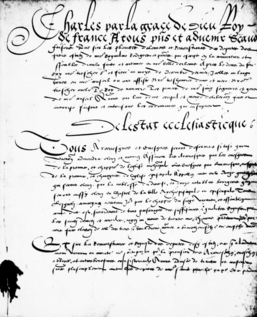
The Edict of Saint-Germain, also known as the Edict of January, was a landmark decree of tolerance promulgated by the regent of France, Catherine de' Medici, in January 1562. The act represented the culmination of several years of slowly liberalising edicts which had begun with the 1560 Edict of Amboise. The edict provided limited tolerance to the Protestant Huguenots in the Roman Catholic realm, though with counterweighing restrictions on their behaviour. After two months the Paris Parlement would be compelled to register it by the rapidly deteriorating situation in the capital. The direct enforced impact of the edict would be highly limited by the subsequent breaking out of the first French Wars of Religion but it would form the foundation for subsequent toleration edicts as first in the Edict of Amboise and then more famously with the Edict of Nantes of 1598.

Anti-Protestantism is bias, hatred or distrust against some or all branches of Protestantism and its followers.
Protestantism originated from the Protestation at Speyer in 1529, where the nobility protested against enforcement of the Edict of Worms which subjected advocates of Lutheranism to forfeiture of all of their property. However, the theological underpinnings go back much further, as Protestant theologians of the time cited both Church Fathers and the Apostles to justify their choices and formulations. The earliest origin of Protestantism is controversial; with some Protestants today claiming origin back to groups in the early church deemed heretical such as the Montanists.
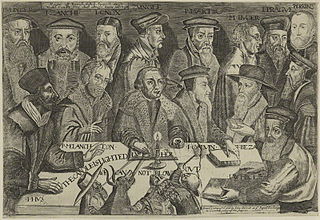
Calvinism originated with the Reformation in Switzerland when Huldrych Zwingli began preaching what would become the first form of the Reformed doctrine in Zürich in 1519.

The Edict of Compiègne, issued from his Château de Compiègne by Henry II of France, 24 July 1557, applied the death penalty for all convictions of relapsed and obstinate "sacramentarians", for those who went to Geneva or published books there, for iconoclast blasphemers against images, and even for illegal preaching or participation in religious gatherings, whether public or private. It was the third in a series of increasingly severe punishments for expressions of Protestantism in France, which had for an aim the extirpation of the Reformation. By raising the stakes, which now literally became matters of life and death, the Edict had the result of precipitating the long religious crisis in France and hastening the onset of armed civil war between armies mustered on the basis of religion, the series of French Wars of Religion, which were not settled until Henri IV's edict of toleration, the Edict of Nantes (1598).
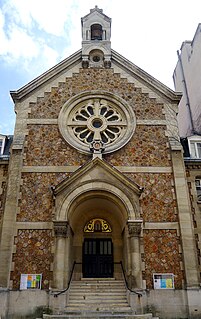
Protestantism in France has existed in its various forms, starting with Calvinism and Lutheranism since the Protestant Reformation. John Calvin was a Frenchman, as were numerous other Protestant Reformers including William Farel, Pierre Viret and Theodore Beza, who was Calvin's successor in Geneva. Peter Waldo was a merchant from Lyons, who founded a pre-Protestant group, the Waldensians. Martin Bucer was born a German in Alsace, which historically belonged to the Holy Roman Empire, but now belongs to France.
The Edict of Torda was a decree that authorized local communities to freely elect their preachers in the "eastern Hungarian Kingdom" of John Sigismund Zápolya. The delegates of the Three Nations of Transylvania – the Hungarian nobles, Transylvanian Saxons, and Székelys – adopted it at the request of the monarch's Antitrinitarian court preacher, Ferenc Dávid, in Torda on 28 January 1568. Though it did not acknowledge an individual's right to religious freedom, in sanctioning the existence of a radical Christian religion in a European state, the decree was an unprecedented act of religious tolerance.
Nicolas Cop, rector of the University of Paris in late 1533, from 10 October 1533, was a Swiss Protestant Reformer and friend of John Calvin. Nicolas Cop and his brother Michel Cop, sons of the king's physician, had become Calvin's friends during their shared time at the Collège de Montaigu. They were sons of Guillaume Cop, a native of Basel who became physician to the king of France, Francis I.
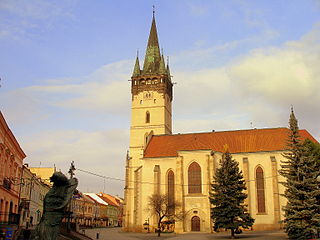
In 16th-century Christianity, Protestantism came to the forefront and marked a significant change in the Christian world.
The Edict of Fontainebleau was issued June 1, 1540 by French King Francis I at his Palace of Fontainebleau. It occurred after the "Affair of the Placards" turned Francis I's policy from one of tolerance to persecution of Protestantism. The edict stated that the Protestant heresy was "high treason against God and mankind" and so deserved the appropriate punishments of torture, loss of property, public humiliation and death.

Catholic–Protestant relations refers to the social, political and theological relations and dialogue between the Catholics and Protestants.
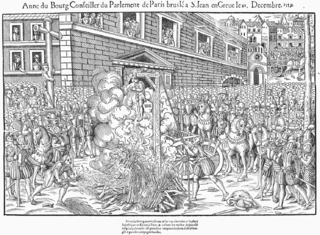
The trial and execution of Anne du Bourg was a critical event in the history of religious conflict in Paris, prior to the outbreak of the French Wars of Religion three years later. Anne du Bourg a judge in the Paris Parlement, would be executed, after calling the king Henry II an adulterer and blasphemer, and refusing to affirm the Real presence. He would be garrotted and burned on 23 December 1559. Several of his colleagues who had been arrested along with him, would be forced to recant their beliefs before returning to re-join the court. His trial would inflame religious tensions in Paris, leading directly to the assassination of President Minard, and contributing to the powder keg that exploded in the riot of Saint Medard a few months later.

The Edict of July, also known as the Edict of Saint-Germain was a decree of limited tolerance promulgated by the regent of France, Catherine de' Medici, in July 1561. Whilst it emphasised a continued commitment to banning Huguenot worship in France, it granted pardon for all religious offenses since the reign of Henry II, who had died two years earlier, which was a victory for the Protestant community. A further Protestant victory was in the reaffirmation of the removal of the death penalty for heresy cases. The edict would be overtaken by events, and ultimately left unenforced as France moved first to the landmark Edict of Saint-Germain and then into the Wars of Religion.

The Edict of Romorantin, was a decree designed to alter the prosecution of heretics promulgated by the king of France Francis II in May 1560. The decree came in the wake of the Amboise conspiracy in which many Protestant Huguenots had participated. Conscious due to this that the previous policy of persecution embodied in the edicts of Châteaubriant and Compiègne had failed, the crown and chancellor altered their strategy, delineating for the first time between heretics and rebels. The edict would transfer the prosecution of heretics who had committed no other offence, to the ecclesiastical courts, which lacked the power to give death sentences. The edict would be confirmed in January 1561 then superseded, first by the edict of July which maintained its provision concerning ecclesiastical courts, and then the more radical Edict of Saint-Germain.

The Edict of Amboise (1560) was a decree that created the framework to separate heresy from sedition, promulgated by the young king Francis II on the advice of his council and mother Catherine de' Medici. The edict was the first promulgated in France that lessened the persecution of Huguenots through the provision of amnesty for past religious crimes on the condition the offender returned to the Catholic fold. The edict was published during the Amboise conspiracy whilst the royal court was resident in the Château d'Amboise and their authority over France was shaken. It would be superseded first by the Edict of Romorantin in May of the same year, then the Edict of July and finally the Edict of Saint-Germain
References
- 1 2 Knecht, Robert (2007). The Valois: Kings of France 1328-1589. London: Hambledon Continuum. pp. 187. ISBN 978-1852854201.
- ↑ Shepardson, Nikki (2007). Burning Zeal: The Rhetoric of Martyrdom and the Protestant Community in Reformation France, 1520-1570. Cranbury, NJ: Associated University Presses. p. 34. ISBN 9780934223874.
- 1 2 3 Cottret, Bernard (2003). Calvin, A Biography. London: A&C Black. p. 110. ISBN 9780567530356.
- ↑ Bietenholz, Peter G.; Deutscher, Thomas Brian (2003). Contemporaries of Erasmus: A Biographical Register of the Renaissance and Reformation. Toronto: University of Toronto Press. pp. 52. ISBN 9780802085771.
- 1 2 3 Armstrong, Alastair; Rees, Rosemary (2003). France, 1500-1715. Oxford: Heinemann. p. 26. ISBN 0435327518.